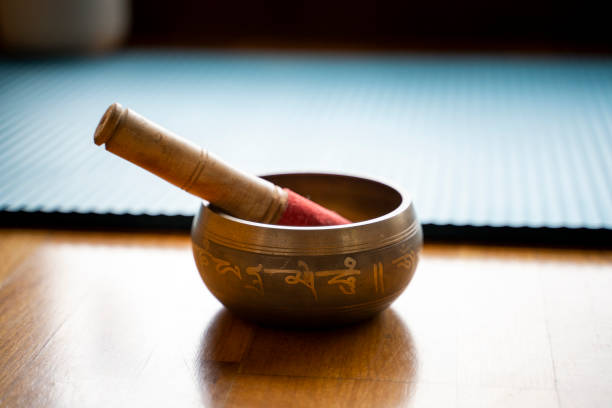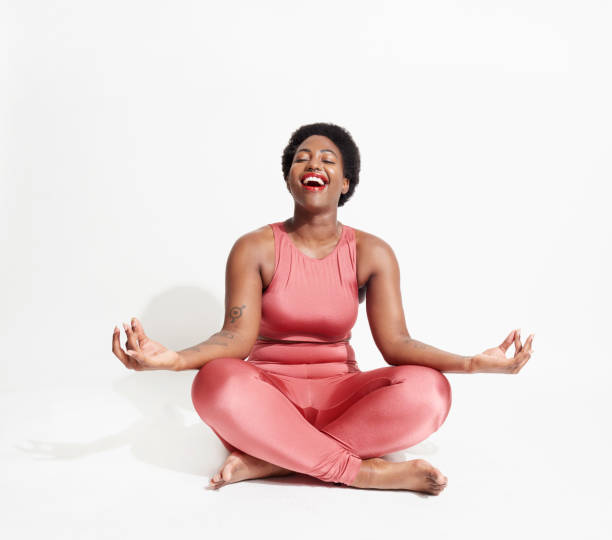
Kiersten is a freelance writer and coach. As a writer,…
You’re stressed. It’s okay to admit it. Life is hard in general, and for Black women, Indigenous women, and women of color, hard is an understatement. In fact, data shows that Black women are more likely to experience more intense symptoms of anxiety than their white counterparts. Sooner or later, if your stress doesn’t decrease or isn’t properly managed, it can lead to more severe mental and physical illnesses. But there’s only so much that happy hour, Netflix bingeing, and retail therapy can do to alleviate stress. It’s time to find a better way of managing your stress.
You’ve heard of mediation; you know it’s important, but it’s not part of your self-care practice. Maybe you don’t think taking a couple of deep breaths every morning is going to magically make your mountain of responsibilities go away. Or perhaps you’ve tried some mediation, but it felt uncomfortable and just wasn’t for you.
However, the meditation benefits outweigh the rocky start you might have had. These benefits include:
- Increasing self-awareness.
- Focusing on the present.
- Reducing negative emotions.
- Increasing imagination and creativity.
- Increasing patience and tolerance.
Meditation also provides support for some physical conditions, such as:
- Lowering high blood pressure.
- Alleviating sleep disorders.
- Reducing tension headaches.
- Reducing chronic pain.
According to Healthline.com, there are nine common types of mediation. Here are four to help you get started.
Guided Meditation
This type of meditation can be very useful for novice meditators or someone who struggles with being alone with their thoughts. Guided Meditations can be found all over, through podcasts, audio tracks, and YouTube. Occasionally they can be mixed with sound or music, but they are often led by a teacher or mediation professional. According to Headspace, a very popular meditation app, guided meditations can help you learn how the mind reacts to mediation. Thinking about dinner plans during meditation is normal. The instructor can provide meditation techniques to help your wandering mind.
Mindfulness Meditation
This is perfect for the overthinkers or those who have limited time and can’t always do a guided mediation. If you often find yourself thinking negatively, mindfulness meditation can help you get a better handle on those distracting thoughts. It’s the practice of observing your thoughts and letting them pass through. It teaches you that sometimes thoughts can just be thoughts. You don’t always have to judge your thoughts or interact with them. Just observe and let the thoughts pass through with each inhale and exhale.

Focused Meditation
We’ve all had those moments where we just can’t seem to focus. Perhaps you’ve blamed it on the distractions, not having the inspiration, or maybe sleep deprivation. Whatever the reason, focusing has become a diminishing skill. With our phones beeping, pinging, and vibrating every second, it’s amazing if we can get four minutes of focus time. For this reason, focused meditation is so crucial.
This type of meditation involves the five senses. The simplest way to practice is to spend time focusing only on your breath. If that feels too complicated, you can focus on an external element such as watching the waves at the beach, staring at the flame of a candle, listening to chimes or bells. Whenever your mind tries to escape, simply come back and focus on what was holding your attention before.

Movement Meditation
Movement meditation is perfect for those who are very active. It can also be for those who want to develop better body awareness. With this type of meditation, the experience of moving your body helps bring you into a meditative state. You can do this through walking, yoga, dance, tai chi, and many other types of movement that involve connecting the mind and the body.
Mantra Meditation
This type of meditation is created for those who don’t mind getting a little vocal in their practice. It is also for those who want to gain more body awareness and increase their focus without solely focusing on their breath. A practice that is very common in Hindu and Buddhist traditions, mantra meditation involves the practitioner focusing on a sound or a repetitive word or phrase to clear their mind. You can start mantra meditation by repeating the common sound “om.” Each syllable from this Hawaiian phrase “Ho’oponopono“ has a certain purpose. Although not really a mantra, you can also repeat this sequence, based on the four types of prayer: “I Love You; I’m Sorry; Please Forgive Me; Thank You.” By saying “I love you,” you are opening the heart. Repeating the words “I’m sorry” supports your humility. Saying ”please forgive me” shows you recognize your imperfections, and ”thank you” is a practice in gratitude. If you need more mantras, you can check out the list at the bottom of this page from The Daily Meditation.
Now that you’ve gotten an idea of how to start your mediation practice, you might be thinking about how much time you need to put in to start seeing a difference. Lauren Ash, from Black Girl in OM, told Oprah Daily that for those starting out, it’s okay to start small with two minutes a day. Even once a week for 10 minutes can make a difference. No matter the length of time, it’s important to choose a time and space you can be consistent with. Ask yourself when you think mediating will be most beneficial for you.
The important thing to remember is that there is no perfect way of meditating. You don’t have to be super-spiritual or have a calm personality to meditate. You can come just as you are, and with practice, you’ll eventually arrive at a place of peace within yourself.
Kiersten is a freelance writer and coach. As a writer, she has written for Travel Noire, Passion Passport, BAUCE mag, and various travel and lifestyle blogs. As a writer, her goal is to write content that inspires others to take action. As a coach, her goal is to empower women to be their most authentic selves. In her free time, you can find her dancing to any song any where.










